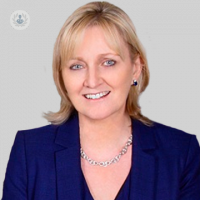Differences between rheumatoid arthritis and osteoarthritis
Written by:Osteoarthritis and rheumatoid arthritis, both well-known conditions, come under the umbrella term ‘arthritis’. But what’s the difference? After reading this article by Dr Stephanie Kaye-Barrett, a leading consultant rheumatologist with over 17 years’ experience, you’ll understand the key differences.

What are they?
Rheumatoid arthritis (RA) is an autoimmune condition in which the body produces antibodies against itself. The target tissue is the synovial membrane, which is the inner lining of the joints.
Osteoarthritis (OA), on the other hand, is a degenerative wear and tear condition. The surface cartilage of the joints is worn away from use and this eventually leads to bone touching bone. This results in severe pain.
Treatment of RA
Disease-modifying agents are used to treat rheumatoid arthritis, such as methotrexate, sulphasalazine and hydroxychloroquine. Steroid injections into joints or directly into the muscle are very useful in the early stages to achieve control of inflammation. The ‘game changers’ for RA are the biological treatments such as adalimumab (Humira) and etanercept. There are many more drugs and such a wide variety of choice. The aim is to achieve control of the inflammatory response, which in turn treats the pain and incapacity.
The key to success is early detection and diagnosis of RA. Blood should be measured for:
- CRP (a test marker for inflammation)
- ESR (reveals inflammatory activity)
- rheumatoid factors (proteins produced by the immune system)
- anti-CCP antibodies (these are present in most patients with RA)
The blood test should be followed by an ultrasound of the affected joints which demonstrates the synovitis (inflammation of the synovial membrane) and inflammation, accurately. These tests may be requested by a general practitioner but the diagnosis and management must be made by a specialised consultant rheumatologist.
Treatment of OA
Unlike rheumatoid arthritis, there are no specific drug treatments for osteoarthritis: it can’t be halted with appropriate medication. The main focus is to reduce the weight that is forced on weight-bearing joints such as the knees, hips, feet and ankles. Injections can be helpful in regards to pain control.
Outlook of RA
The outlook for rheumatoid arthritis is very positive when diagnosed and treated early. Patients must be referred to a consultant rheumatologist, without delay, to achieve relief for their symptoms through the most up to date and appropriate medications.
Outlook of OA
Many patients with osteoarthritis will ultimately need to be referred for joint replacement surgery despite previous treatments. However, physiotherapy is extremely helpful to build muscle and support for the damaged joints.
Which is worse?
Neither condition is worse than the other: they are simply different.
Can an X-ray differentiate between osteoarthritis and rheumatoid arthritis?
In some cases. Osteoarthritis is diagnosed with an X-ray whereas rheumatoid arthritis is best diagnosed with an ultrasound because it can detect synovitis (inflammation of the synovial membrane) and joint swelling. Rheumatoid arthritis can be diagnosed with an X-ray but usually, bony erosions from rheumatoid arthritis only appear at a later stage of the condition.
Can other autoimmune diseases mimic rheumatoid arthritis?
Yes, but blood tests are used to help differentiate rheumatoid arthritis with other autoimmune diseases.
What’s the best way to treat both types of arthritis?
Immune modulating drugs are best for rheumatoid arthritis. Osteoarthritis requires physio, joint injections and surgery.
Both conditions are supported by physio and patients can benefit greatly from its ability to aid muscle strength and reduce pain. It’s important to remember that physio is not curative, however.
If you’d like to learn more about these conditions or receive specialist treatment, get in touch with Dr Kaye-Barrett by visiting her profile.


